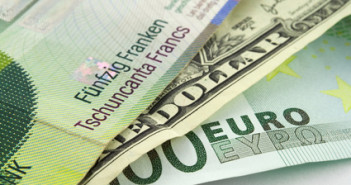The amount of money parked with the ECB has fallen dramatically over the past year, and the banks’ reaction to negative deposit rate is still to be seen. So, the impact of setting a negative deposit rate is not necessarily going to be euro negative, says Simon Smith of FxPro.
In the interview below, Smith also examines the trends in Non-Farm Payrolls and their impact on the dollar, the still existing potential for more stimulus in Japan, a potential rate hike in the UK and more. Enjoy:
Update: ECB sets historic negative rate and promises more – EUR/USD crashes
Update 2: ECB Live Blog: Draghi to deliver even more
Analysis: Did Draghi make a critical mistake with forward guidance?
Simon has over seventeen years experience of macro forecasting and investment strategy research. Prior to joining FxPro in May 2010, Simon was a consultant with Thomson Reuters, having spent four years as Chief Economist at Weavering Capital. He has held economic and strategy positions with Standard & Poor’s, together with consultancy firms 4Cast and MMS International. Simon holds an MSc. in Economics from the University of London and a BSc. from Brunel University.
Is an ECB decision about a negative deposit rate already priced into EUR/USD?
In theory yes, in practise no, because I don’t think the market is clear on the implications of it. People hear negative rates and think that this must be euro negative. But it’s a lot more nuanced than that. Firstly, the amount being deposited back to the ECB under the deposit facility (because banks have surplus cash and do not want to lend it out) has fallen dramatically, by more than 80% over the last year, so it’s now going to impact many banks. Secondly, banks are being charged if they deposit. They are either going to pass that charge on (potentially euro positive as higher rates) or they are not going to move surplus funds overseas, which would be euro negative. In sum, I think the impact is going to be limited and not necessarily euro negative.
The Fed seems to be on a pre-set course of tapering. Does this take the sting out of the Non-Farm Payrolls releases?
Fed officials have made it clear that there is a pretty high hurdle to deviating from the course of steady tapering. We are going to see the 6-month average move below the 200k level at this release (see how to trade the NFP with EURUSD) as the surge in the data for November last year drops out of the calculation, but we’ll only be around 10k or so below the 200k average that the Fed probably feels comfortable with. So to some degree the sting is taken out of the data because the bar is so high, but the dollar is still looking for a strong reason to rally and given the recent gains, could prove to be more sensitive to stronger rather than weaker numbers, the market seeing this as a reason to solidify the stronger dollar view that has been lacking for much of the year.
After the recent inflation numbers in Japan, do you think that the BOJ closed the door on further stimulus? Could it soon begin its own version of QE tapering?
It’s far too early to think of that in my view; more simulative measures are likely this year. We knew inflation was going to be punchy because of the sales tax increase. This will fall out of the calculation in a year’s time, so it’s the underlying rate of inflation that’s important. I don’t feel Japan is there in shaking off the deflationary mind-set of before but also from moving forward with the required structural reforms. This is one reason why the yen has not weakened further in the first half of this year.
Could rising house prices in the UK pressure the BOE to tighten monetary policy sooner than expected?
For rates, it’s not just a house price story. In the UK, there is now a Financial Policy Committee designed to deal with emerging bubbles and risks in the financial sector, so the more appropriate policy response is to place curbs and/or higher capital requirements on mortgage lending. That is the more likely immediate response. That said, I would not be surprised to see a rate hike before the year is out. We need to start adjusting the mind-set that low rates are here to stay, because the alternative is a much sharper and messier rise in rates later. This could well mean that sterling is the surprise of 2014 and we should see EURGBP push below the 0.80 level before long.
Forex volatility has picked up only temporarily. Are we experiencing the calm before the storm or is it here to stay?
Ultimately, for volatility to return, we need to start moving away from the zero rate and QE dominated world which we mostly inhabit on the majors. QE did inspire volatility in the early day, because it was new and there were plenty of mis-priced assets around. Now, the impact is muted and this will be the case whatever the ECB delivers today. Generally, FX is most sensitive to 2Y rate spreads between the respective markets and these in turn are impacted by changing rate and rate expectations, so we will remain in a low volatility world until expectations start moving in a meaningful manner. As discussed, for the UK, this may well start happening for sterling in the second half of the year.
Further reading: Any version of euro-zone QE is going have a limited effect
